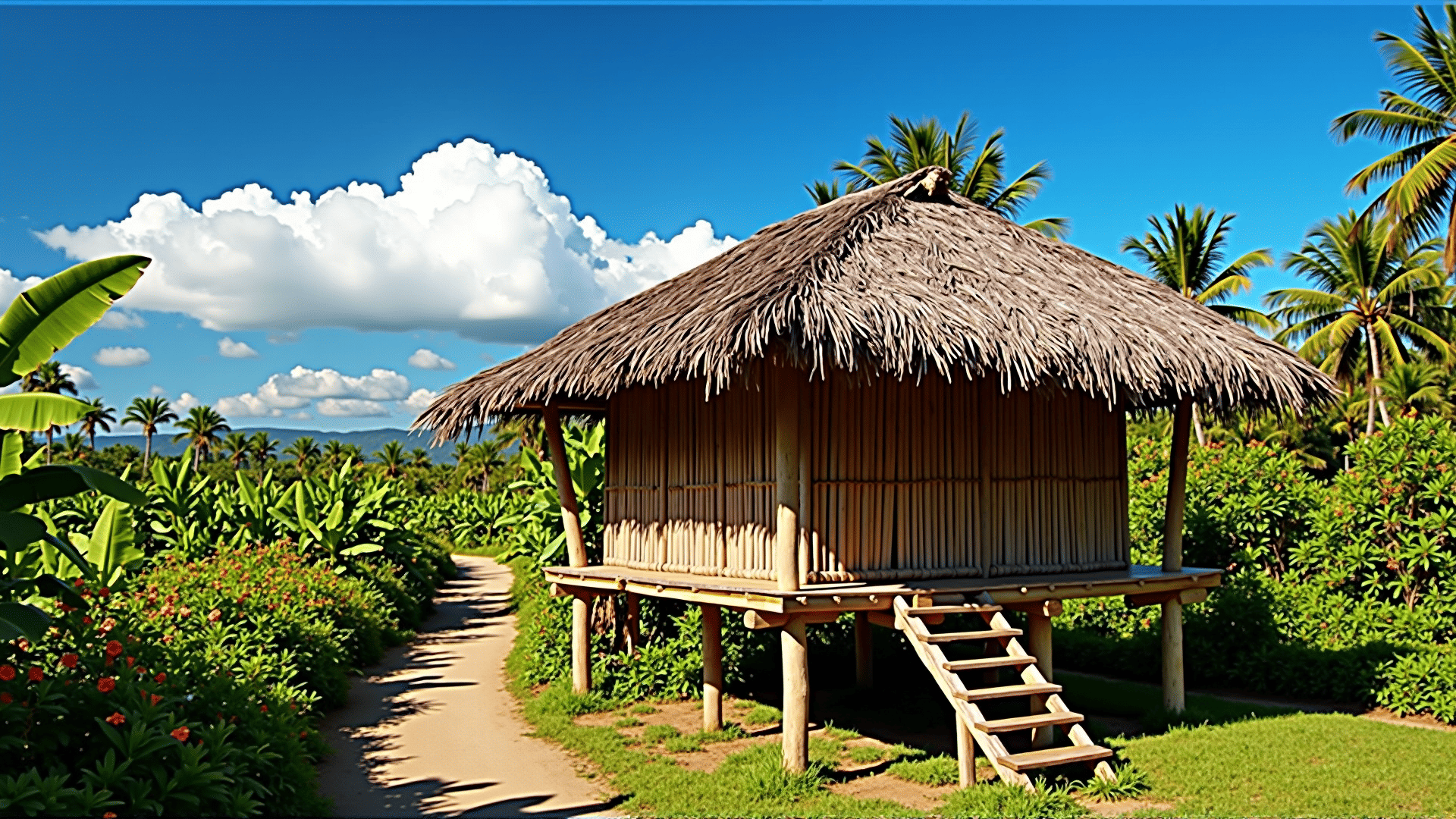The Bahay Kubo, or Nipa Hut, stands as a quintessential emblem of Filipino culture, showcasing an architectural style that embodies simplicity and a profound connection with nature. This traditional dwelling, primarily found in the rural areas of the Philippines, offers a glimpse into the resourcefulness and adaptive spirit of the Filipino people.
Typically constructed using local materials like bamboo, nipa palm, and coconut lumber, the Bahay Kubo is not only eco-friendly but also sustainable. Its design ensures that it blends seamlessly with its surroundings, reflecting a philosophy that respects and nurtures the natural environment. The use of these materials allows for a breathable space, facilitating air circulation and providing a refreshing escape from the tropical heat.
The structure of the Bahay Kubo is elevated on stilts, a distinctive feature that serves multiple purposes. This design choice protects the interior from flooding during heavy rains and discourages pests from entering the living space. The open layout of the Bahay Kubo, often featuring large windows and open walls, invites natural light and ventilation, creating a bright and airy atmosphere. This openness not only fosters a practical way to cope with the humid climate but also encourages communal living, a cornerstone of Filipino familial and community life.
Beyond its physical attributes, the Bahay Kubo holds cultural significance as well. It symbolizes a lifestyle that values simplicity, gratitude, and balance. Life in a Bahay Kubo often revolves around sustainable practices, such as farming and fishing, which are staples in many rural communities. The hut itself serves as a venue for gatherings, where family members come together to share stories, meals, and traditions, reinforcing the bonds that knit the community.
In modern times, the influence of the Bahay Kubo extends even to urban landscapes, inspiring contemporary architects to incorporate its sustainable design principles into new constructions. Its adaptability reflects a growing awareness and appreciation for eco-conscious living, proving that the lessons of the past remain relevant as we forge ahead.
In essence, the traditional Bahay Kubo is more than just a dwelling; it is a testament to a harmonious way of life. It reminds us of the value of simplicity, the strength found in community, and the enduring wisdom of living in tune with the natural world. As we strive for a future that respects the planet, the Bahay Kubo offers timeless insights into creating spaces that nurture both human and environmental well-being.
